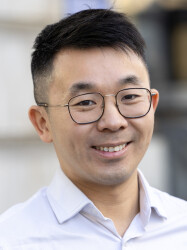BibTex format
@article{Niu:2021:10.1039/D1EE00398D,
author = {Niu, Z and Pinfield, V and Wu, B and Wang, H and Jiao, K and Leung, DYC and Xuan, J},
doi = {10.1039/D1EE00398D},
journal = {Energy and Environmental Science},
pages = {2549--2576},
title = {Towards the digitalisation of porous energy materials: evolution of digital approaches for microstructural design},
url = {http://dx.doi.org/10.1039/D1EE00398D},
volume = {14},
year = {2021}
}

